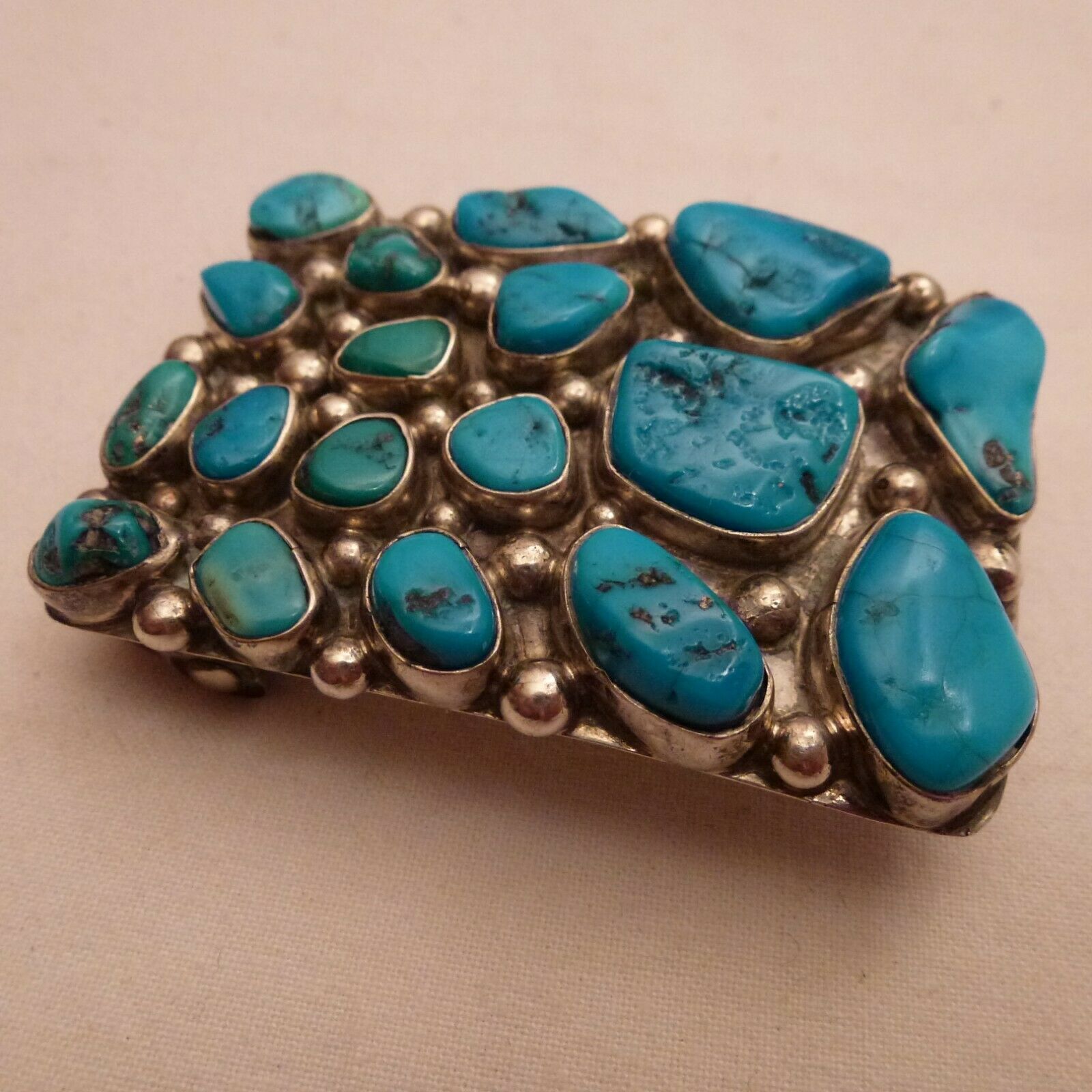-40%
Southwestern Old Pawn Turquoise Cluster Sterling Belt Buckle Hand Made unmarked
$ 105.6
- Description
- Size Guide
Description
Southwestern Old Pawn Turquoise Cluster Sterling Belt Buckle Hand Made unmarked. There is no sterling mark or hallmark of any kind on this piece it is one of three I purchased together from the same estate not one of the three are marked sterling but it is obvious they are It could be that the were never meant to be sold or they could have purchased from a artist at a roadside stand allot of that went on in the 1930's to the 1950's. There are allot of reasons why pieces did not get marked. One of the others I will be listing dose have a early Tommy Singer mark it is marked with a T and quarter moon. They were purchased on vacations out west. This one is about 2-1/4" long and 1-9/16" tall I count 18 pieces of Turquoise. If you are bothered that it is not marked please do not purchase I do not do returns.Why isn't this item called Native American?
The US Department of the Interior Indian Arts and Crafts Act of 1990 and its recent Amendments require that items described as Native American or Indian be made by an enrolled member of a federally recognized tribe. Furthermore, government regulations suggest that all attributions include the Native American Indian's name, tribe and federal tribal enrollment number. Because it is impossible to identify the artist for many vintage items, even if they are authentic Indian made items, we cannot and will not use the words Native American or Indian in association with such pieces.
Native American jewelry is art and as such, it is often signed by the artist. This signature is called a hallmark. A hallmark can be a stamp, that is, an impression made into the sterling silver (or other material) by holding a die on the silver and striking the die with a hammer.
Stamped hallmarks can be all types of letters in various fonts as well as pictures and symbols. Artists sign pieces is by using an engraver.
Several artists might use the same hallmark. An artist might change his or her hallmark several times during a lifetime
Native American artists haven’t always used hallmarks. Early items usually had no hallmarks because the items were made for personal or family use, not for sale.
In the late 1920s and early 1930s the few hallmarks that appeared were made by chisel marks in the 1950s, the Navajo Guild, among others, encouraged hallmark use by its members. During the Native American jewelry boom of the 1970s, hallmarks kicked into full swing and their use continues to this day on the majority of jewelry items.
California Prop 65 Warning
“WARNING: This product contains chemicals known to the State of California to cause cancer and birth defects or other reproductive harm.”
sku RAM box yy
Please make sure this item fits your Exact application before purchasing.
Please ask all questions before bidding or making purchase.
All items are being sold as is with all sales final.
Payment is due in 6 days.
Thanks for looking.
Please email with any questions before making purchase.
















